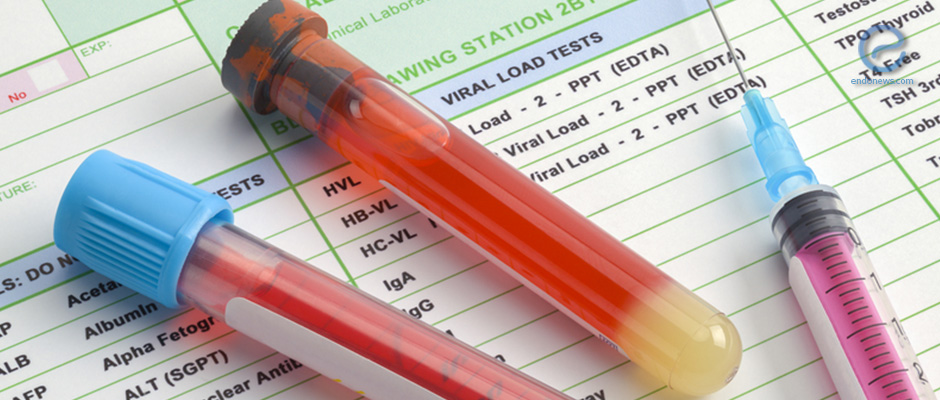The Involvement of the Blood Clotting System in Endometriosis
Jul 13, 2017
The blood of women with endometriosis seems to clot faster than other women, but still in the normal range.
Key Points
Highlight:
- The blood clotting system may play a role in endometriosis.
Importance:
- If confirmed blood clotting parameters could be used in the future as marker to diagnose endometriosis
What's done here:
- A cross-sectional study was carried out retrospectively at the surgical database at San Raffaele Scientific Institute in Milan, Italy between January 2013 and December 2015.
- Researchers analyzed many blood clotting parameters in the blood of women with endometriosis and compared these to women without endometriosis. The patients with hormone or contraceptive usage or malignancy excluded from both groups.
- 314 women who underwent surgery examined: A total of 169 women with a surgical diagnosis of endometriosis compared to those 145 diagnosed with a gynecological problem other than endometriosis.
Key results:
- Many blood clotting factors such as thrombin time, International Normalized Ratio (INR), platelet, neutrophil, and lymphocyte counts (all types of different blood cell types), neutrophil-to-lymphocyte ratio, and the platelet-to-lymphocyte ratio (PLR) are unchanged between women with endometriosis and those without.
- However, the researchers found that blood clots were forming faster, the activated partial thromboplastin time (APTT) was significantly shortened in women wit endometriosis compared to those without.
- When APTT of women with ovarian endometriosis only compared to the other women, it was also significantly shorter. Moreover, women with stage I and II endometriosis had significantly shorter APTT values and higher PLR than those with stage III and IV endometriosis.
- Although the difference is statistically significant, the magnitude of the difference was modest, and these concentrations remained in the normal range, raising doubts about the clinical relevance of the finding.
Limitations:
- Retrospective design of the study could influence the results.
- There was only one type of controls, women who underwent surgery and were not diagnosed with endometriosis.
- The information is insufficient to apply APTT as a biomarker, or predict its crucial role in the origin of the endometriosis.
"The role of the local coagulation system can not be excluded, and it should be explored by evaluating more coagulation parameters or inflammatory markers" added researchers.
Lay Summary
The blood clotting system might be over-active in women with endometriosis, found a study published in the scientific journal Reproductive Sciences.
Although the authors stated that there is not enough evidence to suggest that over-coagulation may be directly causing endometriosis or that the clotting status can be used as a tool to diagnose the disease they noted: “A role of the local coagulation system in the pathogenesis of the disease cannot be excluded.”
In order to assess whether there are any changes in coagulation or enzymatic breakdown of fibrin a protein found in blood clots, which may be associated with endometriosis, a team of researchers led by Dr. Massimo Candiani at IRCCS San Raffaele Scientific Institute in Milan, Italy measured a number of variables of blood clotting status and markers of inflammation in women with endometriosis. They analyzed 314 women who underwent surgery. A total of 169 women had a surgical diagnosis of endometriosis while 145 were diagnosed with another gynecological problem.
The researchers did not find any difference between the two groups of women in many blood clotting factors such as thrombin time (a blood test that measures the time it takes for a clot to form in a blood sample containing an anti-coagulant, after an excess of thrombin has been added), International Normalized Ratio (INR - an assay to evaluate the extrinsic pathway of coagulation), platelet, neutrophil, and lymphocyte counts (all types of different blood cell types), neutrophil-to-lymphocyte ratio, and platelet-to-lymphocyte ratio (PLR).
However, they found that in women with endometriosis the activated partial thromboplastin time (APTT - a test that measures the time it takes for the blood to clot) was significantly shortened compared to controls. In other words, blood clotting was happening faster in women with endometriosis compared to those without.
When the researchers compared women with ovarian endometriosis only to the other women, they found that APTT was also significantly shorter. Moreover, women with stage I and II endometriosis had significantly shorter APTT values and higher PLR than those with stage III and IV endometriosis.
“We confirm the presence of a shorter, but still in the normal range, APTT in women with ovarian endometriomas compared to a control population,” the authors concluded. They added that more research is needed where more coagulation parameters or inflammatory markers are evaluated to confirm the possible role of the blood clotting system in endometriosis.
Research Source: https://www.ncbi.nlm.nih.gov/pubmed/28681683
blood clotting the activated partial thromboplastin time endometriosis

